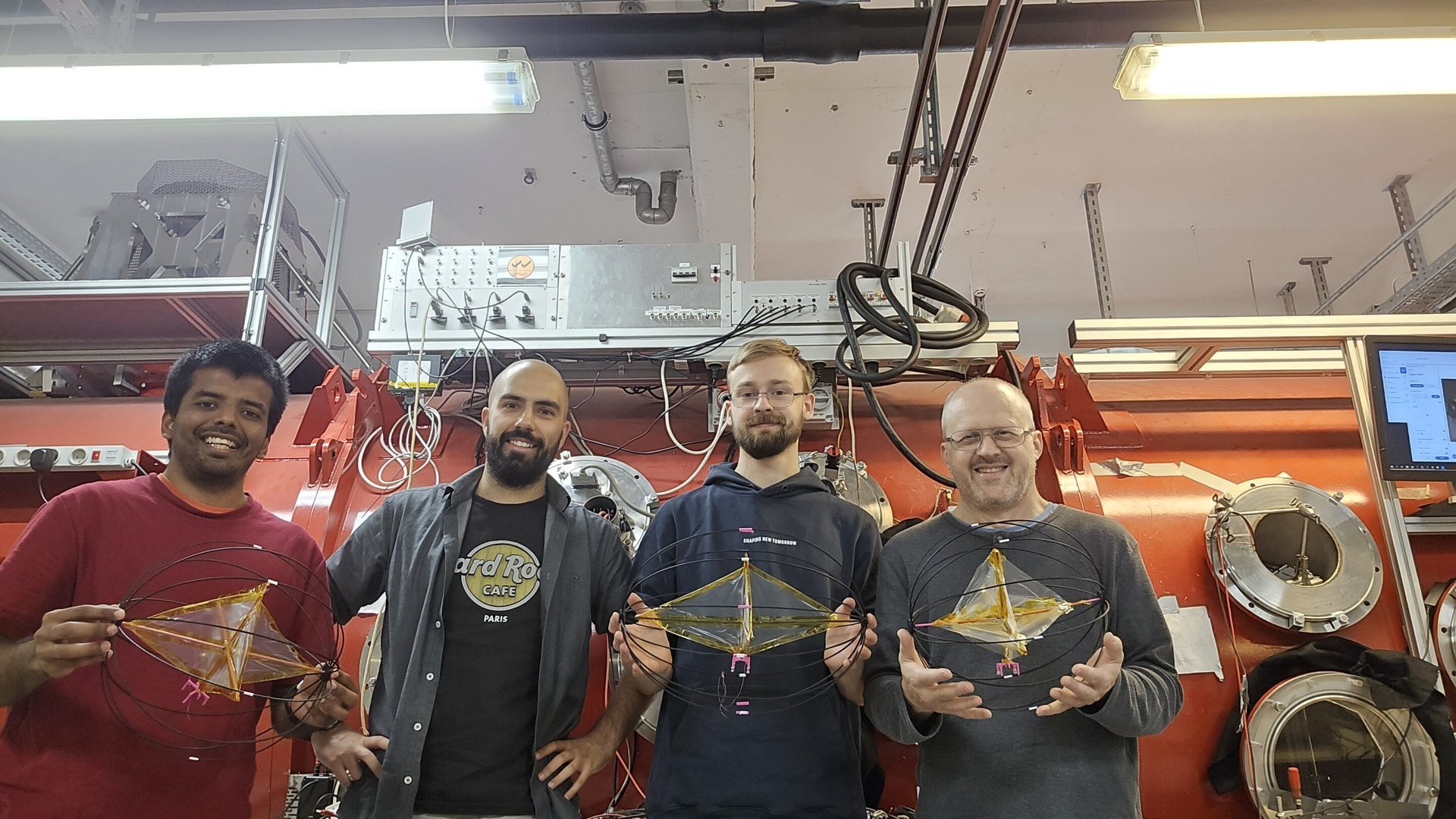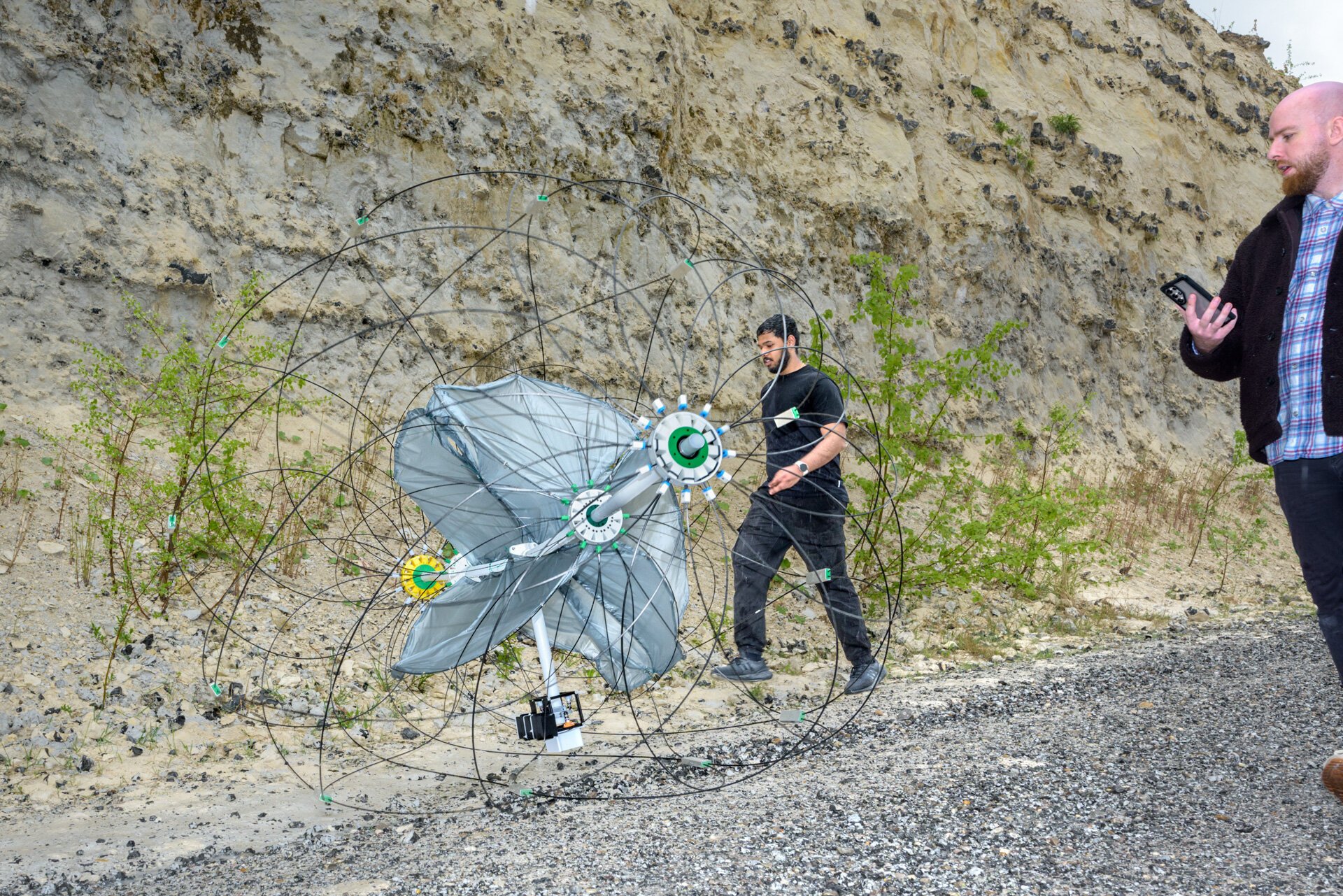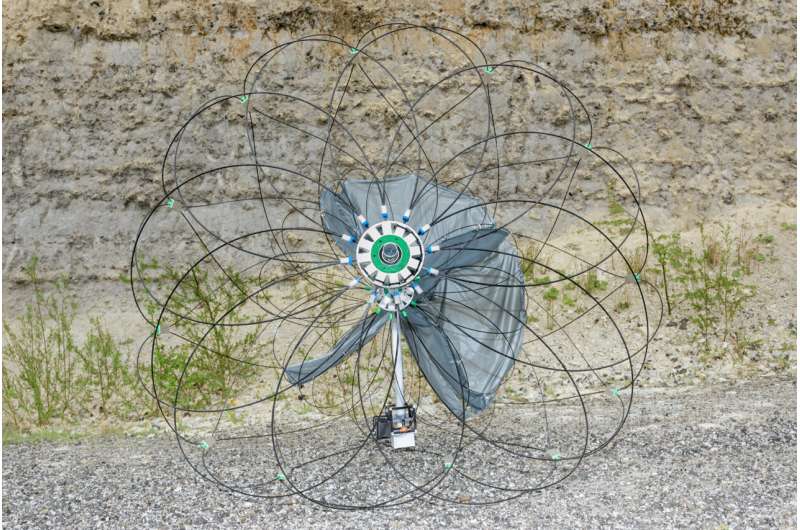Tumbleweeds offer iconic visual depictions of desolate landscapes. Though typically associated with the American West, the most common type of tumbleweed actually originated in Europe, and is known scientifically as salsola targus, or more commonly as Russian thistle. So its only fitting that a team led by European scientists has some up with an idea based on the tumbleweed’s unique properties that could one day have groups of them exploring Mars.
Recently, Team Tumbleweed, as the collective is known, presented the results of a completed series of prototype testing they did at the Joint Meeting of the Europlanet Science Congress and the Division for Planetary Sciences meeting held in Helsinki on September 7-12th. This annual joint event brings together the European and American planetary science communities, with over 1800 scientists and engineers participating this year.
The idea behind the tumbleweed rover is simple - build a flexible, lightweight frame upwards of 5m in diameter, with a suite of sensors embedded in its center, and allow the Martian wind to push it wherever it can go. With a fleet of these rovers, there could be widespread data points spread throughout the area nearby a lander, all at relatively low cost. They could also eventually stop and settle down, allowing access to even more data like soil properties, once the rover was no longer able to move.
 *Members of Team Tumbleweed with their prototype rovers next to a wind tunnel. Credit - Team Tumbleweed*
*Members of Team Tumbleweed with their prototype rovers next to a wind tunnel. Credit - Team Tumbleweed*
But to prove this idea, the team needed to prove that the relatively weak Martian wind could actually propel one of the rovers. They did some calculations and found that, on average, there were gusts of up to 10 m/s on Mars, though with the much thinner atmosphere it wouldn’t provide the same pushing force as wind on Earth would.
With those numbers in mind, they first took a relatively full size (2.7m diameter) prototype to a retired quarry in Maastricht in the Netherlands. This test was to prove the sensors, which in this case were off-the-shelf environmental sensors like a magnetometer and inertial measurement unit, would be able to functional will rolling uncontrolled over actual terrain. The test was a success, proving the principle that sensors can collect and transmit data while being blown around by the wind.
To ensure the wind would actually be able to blow the rover, the team then sent several smaller prototypes to the Aarhus Wind Tunnel at Aarhus University. There the smaller rovers were subjected to wind speeds and atmospheric pressures similar to those they would experience on Mars. Each rover tumbled for a set distance down the wind tunnel and the team calculated what speed would be necessary to force them along their path.
 *Escorting the prototype rover down a hill at the quarry. Credit - Team Tumbleweed/Sas Schilten*
*Escorting the prototype rover down a hill at the quarry. Credit - Team Tumbleweed/Sas Schilten*
Varying the types of terrain the rover was traversing over proved that it could traverse over most of the types of terrain native to Mars - sand, pebbles, a even large boulder fields. In addition, the team put a slope in the chamber, that, while it was only an 11 degree incline on Earth, would be similar to a 30 degree incline in Martian gravity.
Calculations based on the wind tunnel data show a rover could make it about 422 km from its starting point in around 100 Martian days, with speeds reaching .36 km an hour. “In favorable conditions, the maximum range could be as much as 2,800 km” says Mário João Carvalho de Pinto Balsemão, the mission scientist for the project.
There’s still plenty of testing to do before any tumbleweed travels any distance on Mars. To move towards that goal the team plans to update the sensor payload, improve the dynamic models of the system, and test some more prototypes in a field test in the Atacama desert in November. Maybe Team Tumbleweed can take some videos of their eponymous rovers in the desolate Chilean desert that rival the old Hollywood Westerns.
Learn More:
Phys.org / Europlanet - Tumbleweed rover tests demonstrate transformative technology for low-cost Mars exploration
J. Kingsnorth et al - Preliminary Feasibility Assessment of the Tumbleweed Rover Platform and Mission using the AU Planetary Environment Facility
UT - This Could Prevent Rovers From Getting Stuck In Sand Or Dust
 Universe Today
Universe Today
